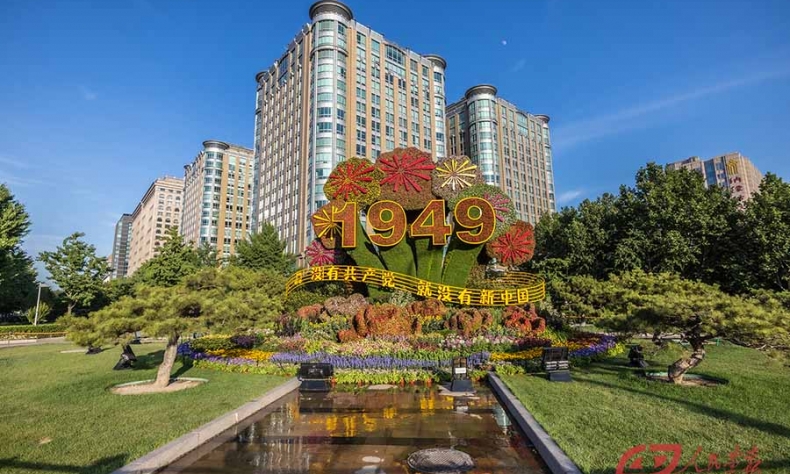Two Different Paths: Communism in China and India

Now China barely trails the world’s largest economy and plays a lead role in development of culture, science and technology, agriculture, renewable energy, and space exploration.
The idea of modern socialism originated with the works of the great German thinkers Karl Marx (1818-1883) and Friedrich Engels (1820-1895), whose theories became popularly known as Marxism. The feudal system had long dominated the world before modern political ideas emerged. China and India both have millennia-long dynastic histories. Toward the end of imperialism, the Western powers sought to take over the world through colonialism.
Dawn of communism
Colonialism began rising on a global scale in the 15th century. Many Asian, African, and American countries were deemed colonies of Spain, Portugal, Britain, France, and the Netherlands. The Western countries expanded their power through missionaries and corporate entities. After the Industrial Revolution, many colonialists made citizens of their colonies bonded laborers or laborers without rights and created inhumane working conditions.
Inspired by Karl Marx, Vladimir Lenin (1870-1924) led a successful revolution in Russia known as the Bolshevik Revolution (or October Revolution) in 1917. As a result, the Tsarist rule ended, and Russia withdrew from the First World War. This event drew much attention from colonized countries because their soldiers and resources were being used for warring between colonial powers while they struggled to meet basic needs. Russia’s revolution was particularly important for countries suffering from colonialism and seeking alternatives to capitalism.
In the early 20th century, China and India both endured political transformation.
An imperial system that had persisted for more than 2,000 years in China was demolished in 1911. Dr. Sun Yat-sen raised up a torch of democracy for the country. After being brutally approached by Western powers and Japan for many years, the ancient civilization was hungry to find its former glory. However, Sun’s democratic ideas didn’t offer workable solutions for Chinese aspirations.
After the May Fourth Movement in 1919, Marxist ideas started gaining increasing influence in China. In 1921, the Communist Party of China (CPC) was founded. Early leaders including Mao Zedong, Zhu De, and Zhou Enlai built strong followings among students, farmers, workers, and many others.
In India, the first freedom fight against the British Empire was launched in 1857, and the first political party, the Congress Party (Indian National Congress), formed in 1885. In the early 20th century, the Congress Party led by Mahatma Gandhi (1869-1948) became the torchbearer of the Indian Nationalist Movement.
India felt betrayed by Britain after the First World War because the latter failed to deliver on its promises of support despite India contributing huge amounts of resources and labor to the war. Many Indian freedom fighters such as Bipin Chandra Pal and Bal Gangadhar Tilak appreciated the October Revolution in Russia. On May 1, 1923, the Labor Kisan Party of Hindustan was founded in Madras (now Chennai), and the Red Flag was raised in India for the Labor Day celebration for the first time. In 1925, the Communist Party of India (CPI) was founded, and many communist groups formed in different regions of the country.
Struggle for independence
The CPC won a significant victory over the Kuomintang and established the People’s Republic of China in 1949. But its development was never easy under immense international pressure from Western countries. China endured challenging times in the 1960s and 1970s. In 1978, China adopted the reform and opening-up policy that kickstarted a journey toward rapid economic development featuring double-digit growth for many consecutive years.
Soon after India’s independence in 1947, an ideological split began fracturing the CPI. One group of leaders opposed the division of India and refused to participate in the democratic process despite the CPI becoming the leading opposition to the Congress Party in 1952. Due to ideological divisions, the Communist Party of India (Marxist) split from the CPI in 1964. In the late 1960s, the Srikakulam peasant uprising occurred in Andhra Pradesh. In 1967, an armed uprising broke out in Naxalbari, West Bengal, under a “land to tiller” slogan, and expanded into a bloody revolution. However, the Indira Gandhi-led government countered with Operation Steeplechase, which hugely impacted trade unions and peasant organizations.
Future prospects
Although Communism was introduced to China from Russia, China adopted Chinese characteristics and applied more situation-specific measures. While sticking to socialism, China has learned greatly from capitalist countries and promoted Chinese language and culture overseas. Socialism in China has been progressive, continuously introducing and improving policies in the interests of the Chinese nation.
Indian Communists largely ignored the indigenous character of Indian society while focusing too much on basic communist theories. India has a strong spiritual background as the motherland of many religions. Indian people have widely accepted Gandhian values of truth and non-violence.
By raising the voices of laborers, farmers, and landless people, Indian Communists managed to participate extensively in the central government with the Congress Party in the 1980s and 1990s and once held the governments of West Bengal, Kerala, and Tripura through some alliances. Now, a nationalist government is in power, and Communists have been marginalized after losing their biggest state of West Bengal and struggling in every other state outside Kerala. Indian Communists need to adjust their policies to gain more support among Indian citizens.
Now China barely trails the world’s largest economy and plays a lead role in development of culture, science and technology, agriculture, renewable energy, and space exploration. It has also contributed developmental goals for the platforms of many international organizations such as BRICS and the SCO while sharing the Belt and Road Initiative with the rest of the world.
Rajiv Ranjan is an assistant professor at K.R. Mangalam University, India.
 Facebook
Facebook
 Twitter
Twitter
 Linkedin
Linkedin
 Google +
Google +










